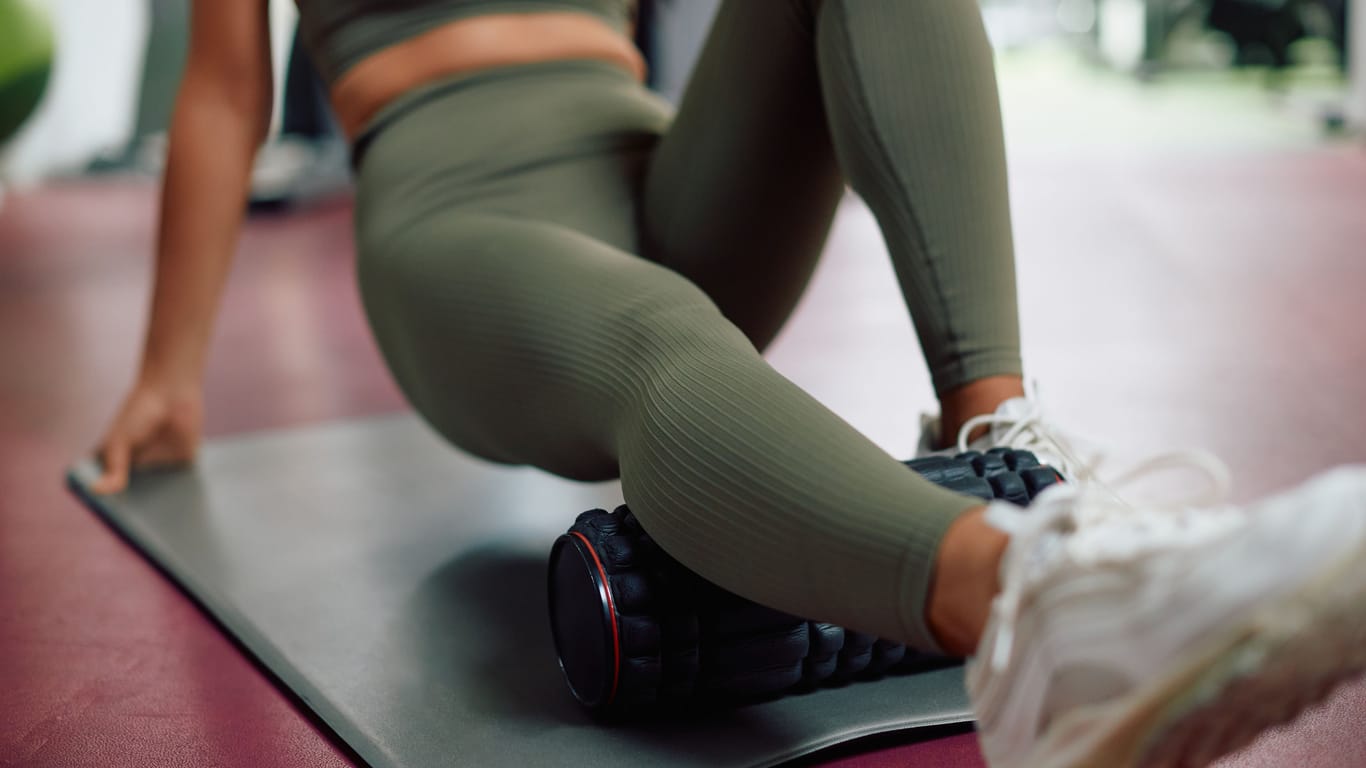In recent years, training with the fascia roller has become increasingly widespread. The more or less solid hard foam roller is available in different sizes and designs, such as smooth or with knobs. Read more here about whether exercises with the fascia roller can damage the veins and for whom training with the hard foam roller is not suitable.
- Fascia training: How to relieve tension
- Six exercises: fascia training for greater well-being
What is fascia?
Fascia is connective tissue structures that surround the muscles like a tube and keep them in shape. Fascia, as fine skin, surrounds organs, joints and nerves – as well as vessels such as arteries and veins. Like a network, they run through the entire body.
As with other connective tissue, nerves and receptors are also part of the fascia. Some researchers therefore believe that the network-like structures could be a type of sensory organ.
A lack of movement can lead to fascia sticking together or even becoming matted. This can cause painful symptoms. However, this has not yet been clearly proven.
What are the benefits of exercises with the fascia roller?
Exercises with the fascia roller are said to have various positive effects on health . Regular training with the hard foam roller should:
- improve joint mobility.
- Relieve and prevent muscle tension and pain (such as back pain ).
- Relieve and prevent joint pain.
This is supposed to work because during exercises with the fascia roller, the blood circulation in the tissue increases and stuck fascia loosens when it is pushed against each other during rolling and smoothes out again. At least that’s the idea behind it.
However, there is hardly any research into what exercises with the fascia roller actually achieve. In particular, there are no studies examining effects in humans. Many statements are based primarily on studies on animals – however, these results cannot simply be transferred to humans. There has also been little research into whether fascia training can have undesirable side effects.
So far, the main thing that seems to be proven is that exercises with the fascia roller can have a positive effect on joint mobility – but according to studies, this may only be in the short term. Sore muscles also seem to be partially relieved with the foam roller, as long as the pressure exerted is not too high.
Some experts believe that fascia therapy with a hard foam roller may not be based on the fascia alone. But rather on the effects that the pressure has on all underlying structures (such as skin, fascia, muscles, nerves, lymphatics, blood vessels).
Who are exercises with the fascia roller not suitable for?
Experts usually recommend not using the foam roller directly on bony structures and joints, not on the stomach or on varicose or spider veins.
Exercises with the fascia roller are also not recommended if you have certain pre-existing illnesses or health problems. This applies, for example, to people with diabetes and smokers, as their blood vessels and nerves can be damaged. It is also not advisable to do exercises with the fascia roller if:
- Diseases that are associated with a tendency to bleed (hemophilia)
- Tendency to develop varicose veins or spider veins
- Diseases of the lymphatic system
- Vascular diseases
- Polyneuropathy
- thrombosis
- Spinal gliding
- surgically stiffened vertebral bodies
Fascia roller and veins: How important is the direction of rolling on the leg?
When doing exercises with the fascia roller, a lot of pressure is created – not just on the fascia, but on all structures underneath the roller, including vessels such as veins. During training, the fascia roller is often not only moved in one direction, but always back and forth. Some experts consider this to be problematic, especially in the leg because of the veins there.
The veins in the leg carry the oxygen-poor blood back to the heart. This is achieved with the help of the venous valves, which act like a kind of check valve to prevent the blood from flowing back and sinking into the legs.
According to experts, when it comes to vein health, it would be more advisable to always roll the fascia roller on the leg in one direction – namely towards the middle of the body or towards the heart. Physiotherapists also learn during their training that they should only massage in the direction of the torso.
If the fascia roller is rolled in both directions on the leg for years, this could potentially be harmful to the veins and the venous valves located there. Because then the blood is repeatedly pressed back against the venous flow and the return flow has to work against it more strongly. This could promote varicose veins in the long term, especially in older people. However, this has not yet been scientifically investigated.However, this does not mean that training with the foam roller is generally not recommended. Based on current knowledge, training with a fascia roller generally does not cause any harm. What is also certain is that exercise has a positive effect on the fascia and it is worth staying active (and not just for that reason).If you want to make sure that training with the fascia roller is carried out correctly and does not harm the veins, it is best to have the exercises shown to you by a physiotherapist beforehand.

